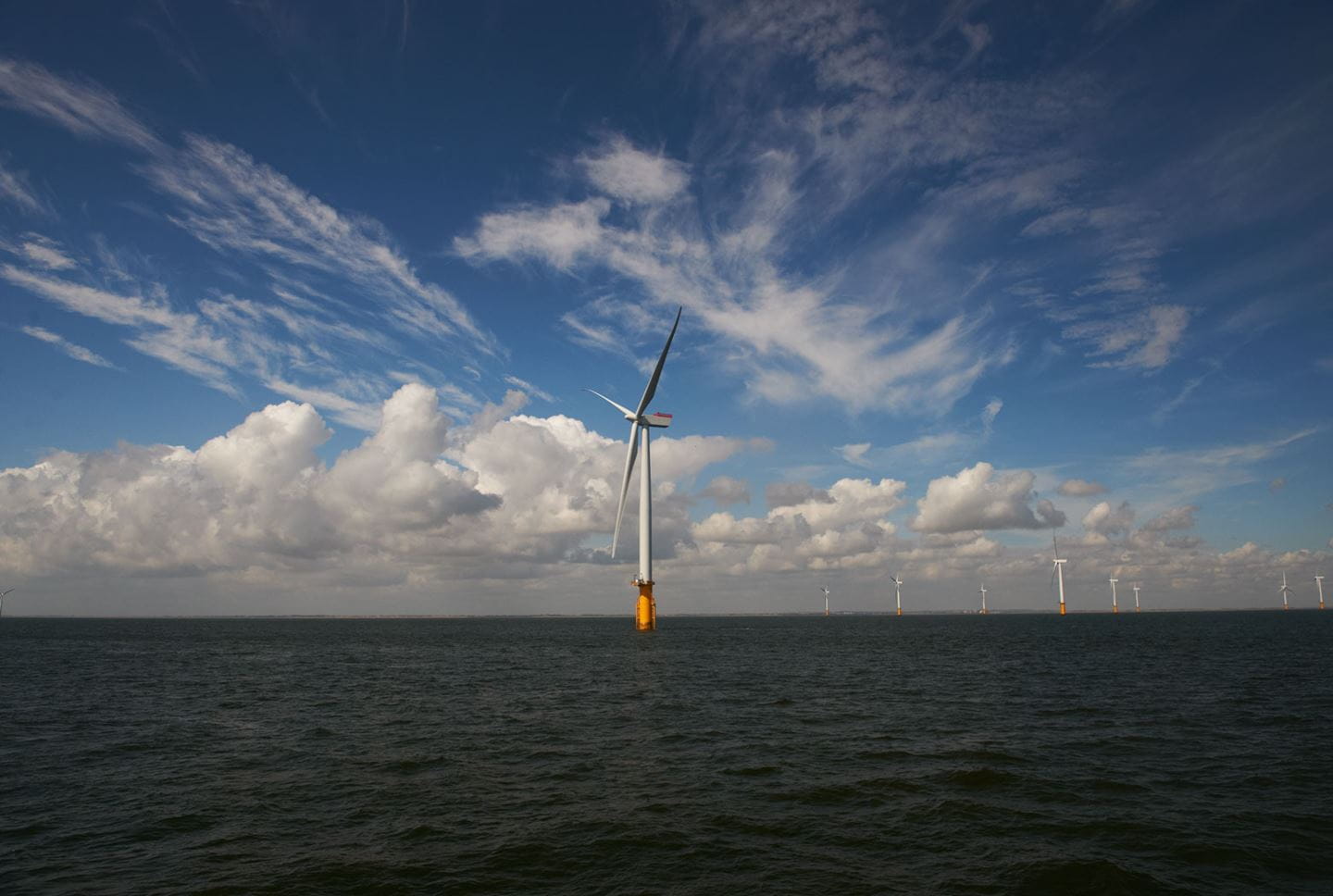The offshore wind industry is a major success story.
Over the course of three decades the technology has gone from research project to global energy technology. The first offshore wind farm was installed in Danish waters in 1991. The 11 turbines had a total capacity of 4.5 megawatts, roughly enough to power 2,000-3,000 homes. Fast forward to today and the industry is developing single turbines which are three times as powerful. One sweep of a modern turbine could power the average European household for more than a day.
The industry has reached this level of maturity in some ways against the odds. In a short number of years the demands placed upon it to grow and cut costs have been enormous. And yet it has delivered through a combination of industry innovation, experience, and supportive government policies.
From those first humble turbines the industry has installed over 60 gigawatts, enough to power tens of millions of households. But this is where things get tricky. The sector now faces unique headwinds which threaten to push its growth journey off course and into choppy waters.
Challenging environment
At any one time the renewable energy industry has to navigate policy landscapes and uncertainties which are a function of doing business across different countries and continents. In recent years these uncertainties have grown and been exacerbated by economic pressures. Persistent inflation and rising interest rates have meant the cost of building new wind farms has spiralled. The war in Ukraine has led to skyrocketing energy prices and supply chain constraints as Europe confronts a full-scale conflict on its doorstep.
This has had a knock on effect for many millions of people, businesses, and the offshore wind industry. Cost matters when the turbines you are building are bigger than the Eiffel Tower and being placed miles from land. Offshore projects can be sensitive to global shocks as it takes years to go from first designs to final turbines in the water.
Despite these pressures the world is depending on offshore wind to help meet its climate targets and reduce global temperatures to 1.5C. To do this requires a tripling down of support for renewable technologies. The International Energy Agency and its renewables counterpart, IRENA, both see clean energy capacity tripling to 11,000 gigawatts by 2030 if we are to stand a chance of meeting our climate goals.
Getting back on track
Ørsted, a global renewable energy company and the world leader in offshore wind, argues that the long-term prospects for the technology remain bright. But the sector’s current issues jeopardise whether it can build out projects as fast as is needed. Last September the company published a seven-point plan to help the industry get back on track. It insists that offshore wind remains essential to the energy transition especially given the “recent global fossil fuel supply shock”, adding that “it is crucial for governments and industry to work together to weather the current storm and facilitate future offshore wind deployment.”
This push-pull dynamic has historically been such a success for the sector. Supportive government policies have helped spur innovation and investment. Strong levels of action from policymakers matched by industry commitments to drive down costs will now prove decisive. This means creating a path from high government targets to a place where investment decisions can be made and high volumes of clean power can be brought online. For example, making it simpler and more predictable to get projects approved, and creating a market which accounts for future risks. Among other things, it is these risks, seen in the global upheaval of the past 18 months, which create uncertainty and a lack of confidence.
All hands on deck
Emil Damgaard Grann, head of global positioning at Ørsted, commented: “This is not just an issue facing the offshore wind industry. If we don’t fix these problems, from high inflation to supply chain bottlenecks, then society stands to lose out. Climate targets, job creation, and the huge economic growth opportunities which flow from offshore wind will be missed.”
Government targets for offshore wind will require an estimated US$100 billion in supply chain investment over the next seven years. This would have huge economic and environmental benefits for the planet. But to get there means adopting an all hands on deck approach.
Sponsored post by Ørsted. See our supporters page for what this means.
Adam Wentworth is a freelance writer based in Brighton, UK.
